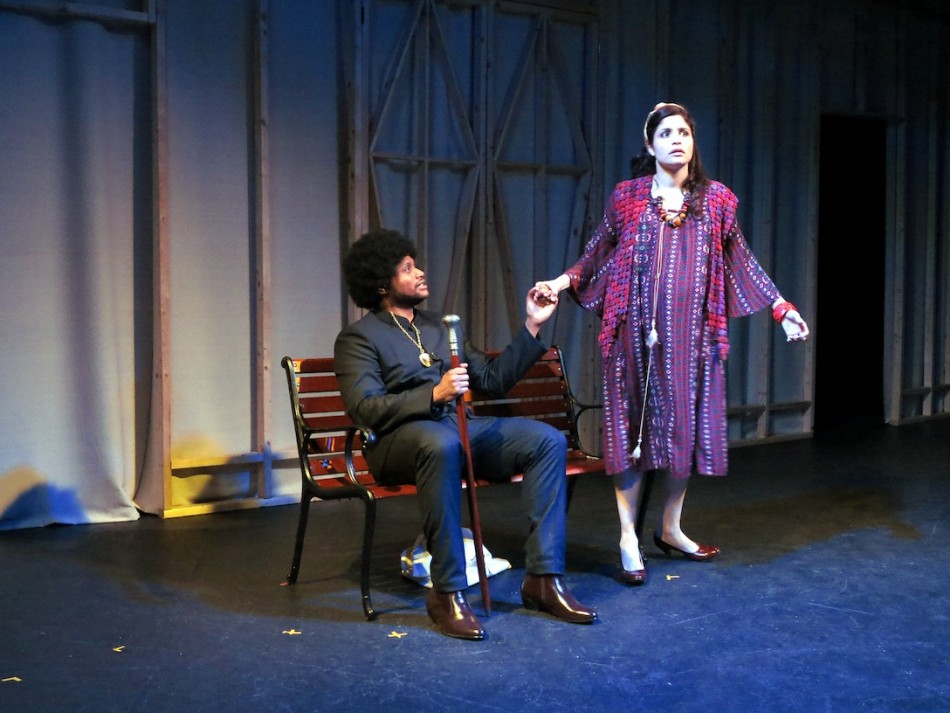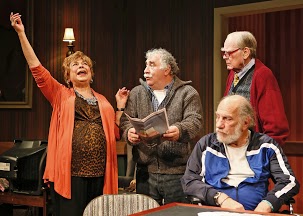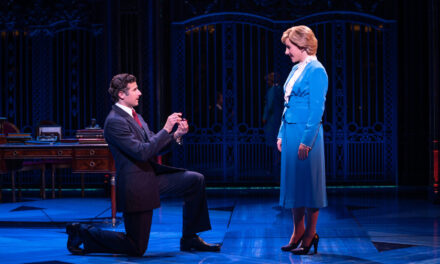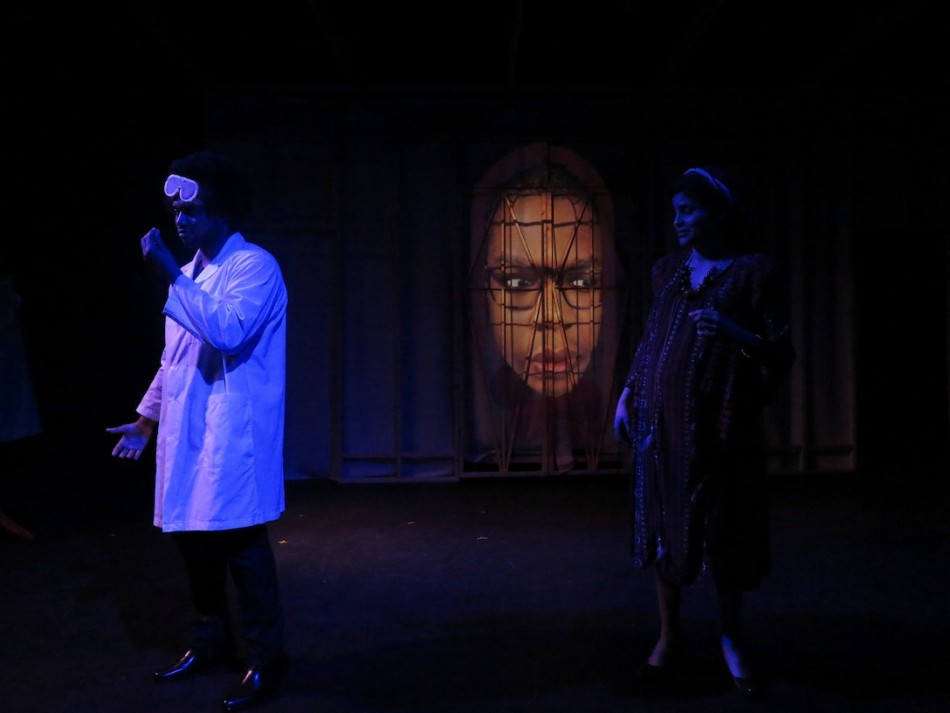

by Eric J. Grimm
August Strindberg Repertory continues its American update of Strindberg’s To Damascus trilogy with the second installment, Damascus II, now playing at the Gene Frankel Theater. The first installment, performed two years ago, set the action in 1960s Harlem while the second, performed with a new cast, is moved to California in the same time period. Creative director Robert Greer’s mission to substitute class struggles for American racial conflict is admirable but the production fumbles in similar ways to the first part, requiring too much suspension of disbelief to successfully translate Strindberg’s work to the American setting.
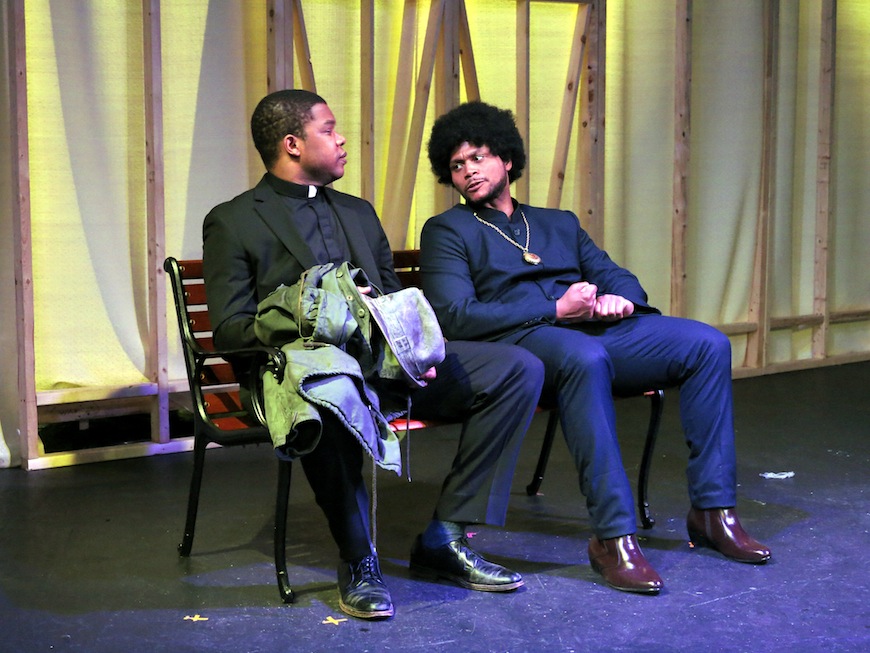

Part II picks up directly after the events of Part I, with the tortured black intellectual known as The Stranger (Jarde Jacobs) attempting to find financial success in order to provide for his wife, The Lady (Ivette Dumeng), and their unborn child. He is often antagonized by her parents (Diana Lynne Drew and Al Foote III) and her ex-husband (Tomike Ogugua) and haunted by a beggar (Andres Pina) who attempts to lead him to spiritual salvation. Jacobs struggles mightily with the role, delivering impassioned monologues in a full and booming voice with little variation. Greer might have guided his lead to find some quieter and more vulnerable moments in The Stranger’s journey to balance out the shoutier bits of dialogue that land frequently throughout the play. Ivette Dumeng, who was a wonderful Queen Kristina in the company’s production of Kristina last fall, is a clear standout in the company, harnessing her rich voice to show the sometimes erratic Lady’s tenderness amidst the chaos of which she is often the cause.
Edgar Chisolm’s adaptation is more adventurous than the translation of Part I. He embraces the Beat Poet-era setting, injecting the dialogue with hipster slang and making frequent references to 1960s popular culture figures including several nods to Walter Cronkite. It’s more successful than Part I in that regard but still shows the limitations of the updated setting. The particular class struggles and litigious nature of the characters seems better suited to the early 1900s Swedish setting than 1960s America. There is an attempt in the production to balance it out with a fever dream quality, but the clunky scene changes and kooky projections do more to tear the audience away from the show rather than immerse them in Greer’s vision.
Damascus II. Through April 2 at the Gene Frankel Theatre (24 Bond Street, between Bowery and Lafayette). www.strindbergrep.com
Photos by Jonathan Slaff


